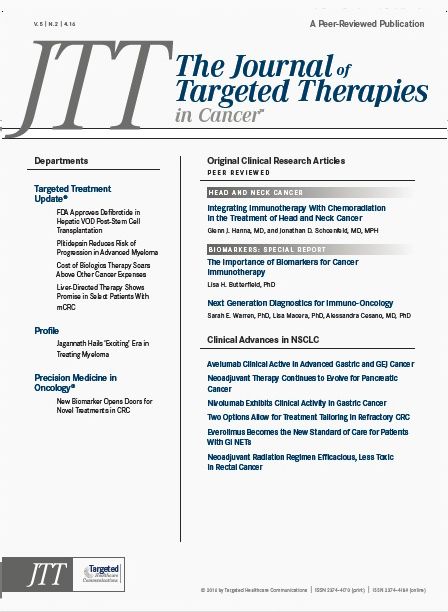From the Editor: Exciting Advancements in Therapeutic Regimens
Advances in the treatment of cancer have been possible due to the use of agents that target genomic mutations involving oncogenic signaling and immune regulatory pathways. These advances have resulted in major paradigm shifts in our clinical approach to the patient with metastatic cancer.
Howard L. Kaufman, MD, FACS
Advances in the treatment of cancer have been possible due to the use of agents that target genomic mutations involving oncogenic signaling and immune regulatory pathways. These advances have resulted in major paradigm shifts in our clinical approach to the patient with metastatic cancer. In the modern era, it is important to consider both the genomic mutation profile of an individual cancer patient’s tumor and the immunoregulatory factors that are present, which may block effective anti-tumor immunity.
While progress has been made in understanding these factors in real time that can result in clinical application, much work needs to be done to rapidly identify the precise mutations and immune characteristics so that they can be used in direct clinical management. The future implementation of both precision medicine and immunology will depend on continued analysis of distinct patient populations, critical assessment of new technologies, and validation of predictive biomarkers that will allow better patient selection, treatment design, and clinical monitoring of cancer patients on contemporary therapeutic regimens.
In this issue ofThe Journal of Targeted Therapies, examples of all three approaches are readily apparent in our section of peer-reviewed articles. Hanna and Schoenfeld describe the experience with immunotherapy in patients with squamous cell carcinoma of the head and neck alone, and in combination with cytotoxic chemotherapy, cetuximab, and/or radiation therapy. The authors provide a comprehensive review of the clinical data obtained to date that support the role of combination treatment in this traditionally challenging population. Head and neck cancer may represent a new indication for T cell checkpoint inhibitors in the near future.
In a short review article, Warren and colleagues describe a new technique for the rapid evaluation of gene expression in tissue samples from cancer patients using a Nanostring assay. This approach allows the rapid analysis of a large number of messenger ribonucleic acid (mRNA) and protein molecules from a small volume of tissue specimens. This technique may have important applications in identifying information beyond genomic analysis, and can be envisioned as a tool for repeat sampling and monitoring of patients over time.
Finally, Dr. Lisa Butterfield, president-elect of the Society for Immunotherapy of Cancer, provides a succinct overview of why predictive biomarkers are important for the field, and describes a plan for analysis and validation of new biomarker technology and assays.
While more research is needed to fully optimize therapeutic decision-making, this is an exciting time in clinical oncology. The close interaction of clinicians with access to patient data and biospecimens, industry experts with access to the latest targeted therapeutics, technical advances in diagnostic approaches, and professional societies with access to thought leaders in the field, will be critical to further changing paradigms for the treatment of cancer. By working together, the potential for clinical benefit in patients with cancer is increasingly bright.

Survivorship Care Promotes Evidence-Based Approaches for Quality of Life and Beyond
March 21st 2025Frank J. Penedo, PhD, explains the challenges of survivorship care for patients with cancer and how he implements programs to support patients’ emotional, physical, and practical needs.
Read More